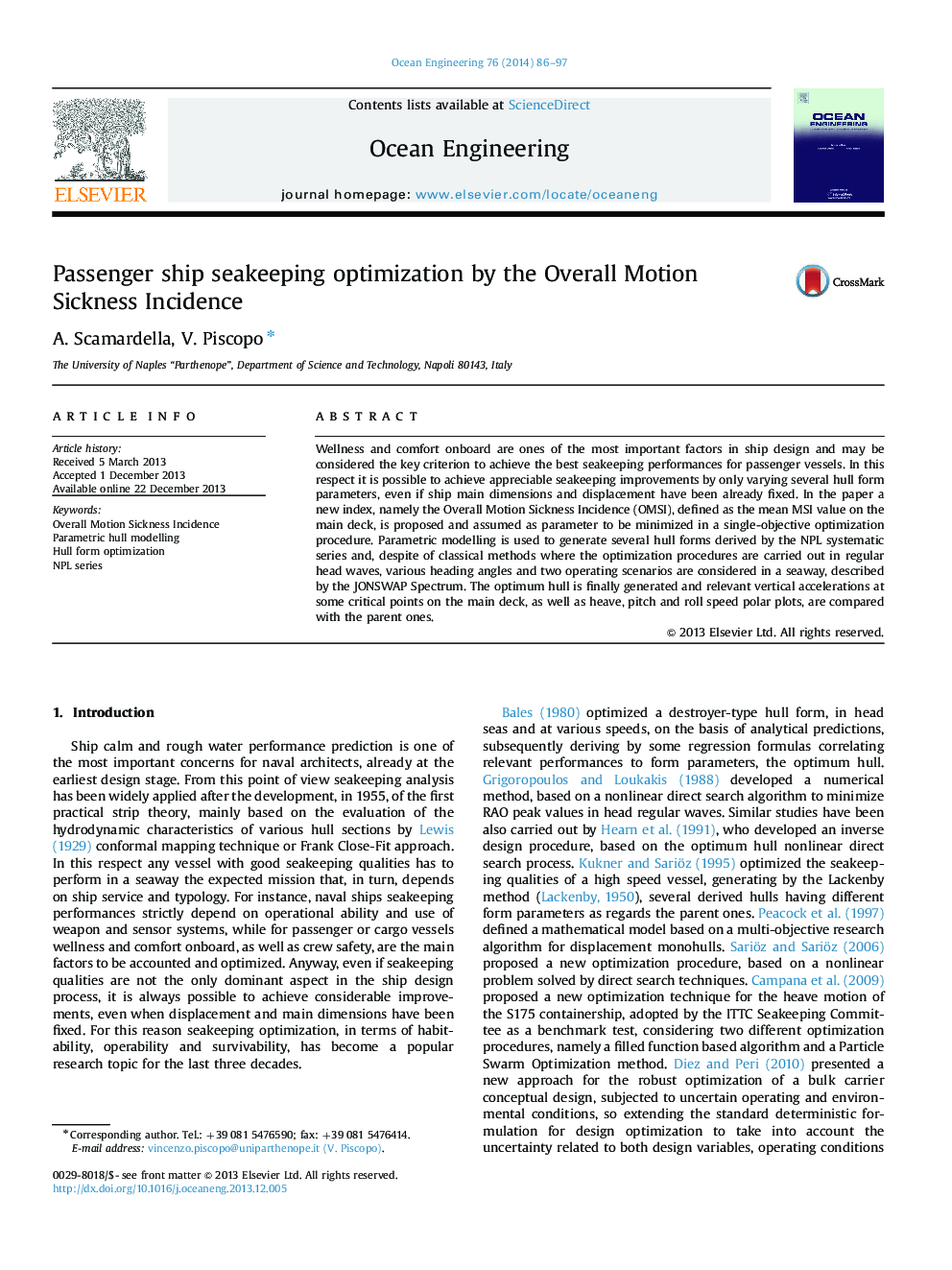| کد مقاله | کد نشریه | سال انتشار | مقاله انگلیسی | نسخه تمام متن |
|---|---|---|---|---|
| 1725760 | 1520714 | 2014 | 12 صفحه PDF | دانلود رایگان |
• Introduction of a new seakeeping index, namely the Overall Motion Sickness Incidence.
• Parametric hull modeling by the Lackenby method.
• Seakeeping optimization in a seaway, accounting for heading angles and various operating scenarios.
• Influence of all statistically relevant combinations of wave heights and zero-crossing periods.
Wellness and comfort onboard are ones of the most important factors in ship design and may be considered the key criterion to achieve the best seakeeping performances for passenger vessels. In this respect it is possible to achieve appreciable seakeeping improvements by only varying several hull form parameters, even if ship main dimensions and displacement have been already fixed. In the paper a new index, namely the Overall Motion Sickness Incidence (OMSI), defined as the mean MSI value on the main deck, is proposed and assumed as parameter to be minimized in a single-objective optimization procedure. Parametric modelling is used to generate several hull forms derived by the NPL systematic series and, despite of classical methods where the optimization procedures are carried out in regular head waves, various heading angles and two operating scenarios are considered in a seaway, described by the JONSWAP Spectrum. The optimum hull is finally generated and relevant vertical accelerations at some critical points on the main deck, as well as heave, pitch and roll speed polar plots, are compared with the parent ones.
Journal: Ocean Engineering - Volume 76, 15 January 2014, Pages 86–97
